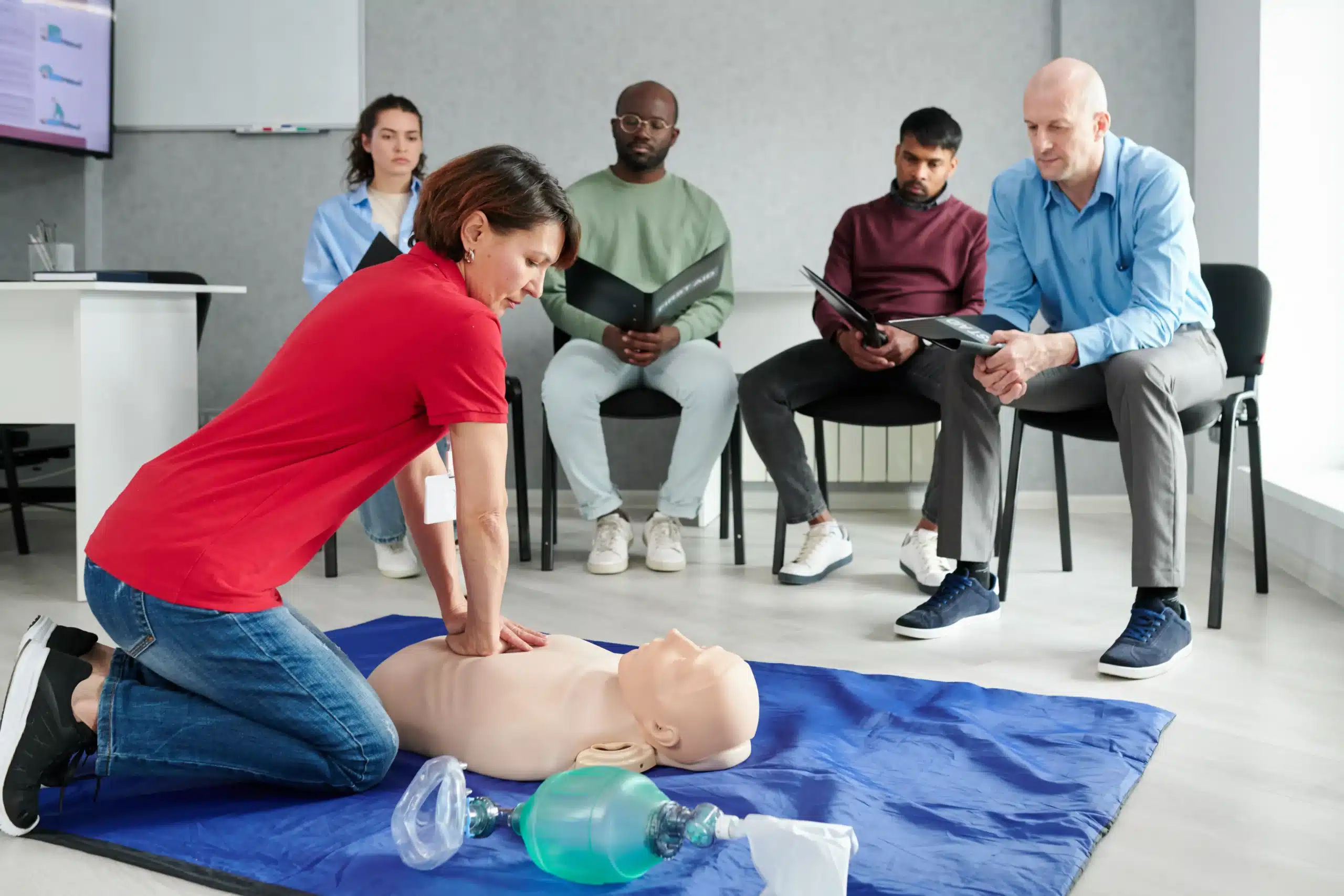Cardiopulmonary Resuscitation (CPR) is more than just a technique; it’s a skill that can mean the difference between life and death. Imagine someone collapsing in front of you due to sudden cardiac arrest (SCA). Immediate CPR can double or even triple their chances of survival. The significance of CPR extends beyond healthcare professionals—it’s a lifesaving skill everyone should know.
This blog will explore the role of CPR in healthcare and everyday life. We’ll discuss its origins, life-saving potential, and why healthcare professionals and ordinary citizens alike must learn and practice this crucial skill. Finally, we’ll guide you on how to get trained, debunk common misconceptions, and inspire you to take action today.
Key Takeaways
- CPR Saves Lives. Immediate action can double or even triple survival rates for cardiac arrest victims.
- Universal Value. From healthcare professionals to bystanders, everyone can play a role in an emergency.
- Ongoing Learning Matters. Techniques and knowledge evolve, making regular training essential.
What Is CPR and Its Role in Healthcare?
What is CPR?
CPR, or Cardiopulmonary Resuscitation, is a lifesaving emergency procedure performed when someone’s heart stops beating or they stop breathing. At its core, CPR combines manual chest compressions to maintain blood circulation and rescue breaths to supply oxygen.
The primary goal of CPR is simple but powerful—restore blood flow and oxygen to vital organs like the brain until advanced medical care arrives. The procedure bridges the crucial moments between cardiac arrest and professional care, preventing significant brain damage or death.
Universality of CPR
CPR isn’t just for hospitals or paramedics—its applicability spans home emergencies, workplace incidents, and public spaces like gyms or airports. This universality makes it a skill everyone should have at their disposal.
The History of CPR
A Timeline of Life-Saving Progress
The concept of CPR has evolved significantly over the years:
- 1740s: Mouth-to-mouth resuscitation was first recommended by the Paris Academy of Sciences to save drowning victims.
- 1950s: Modern CPR began taking shape with the advent of closed-chest cardiac massage techniques and structured protocols.
- 1960s: The American Heart Association (AHA) formally introduced training programs, emphasizing widespread public education.
- Present Day: With further refinements based on rigorous scientific research, CPR is now a well-documented and standardized procedure used worldwide.
Milestones in CPR’s Evolution
The development of Automated External Defibrillators (AEDs) and improvements in training accessibility have made CPR more effective and user-friendly over time.
Importance of CPR in Saving Lives
The Power of Immediate Action
The statistics are clear:
Every year, an estimated 356,000 cardiac arrests occur outside of hospitals in the United States alone. Nearly 70% of these happen at home. Yet only 46% of victims receive bystander CPR before emergency services arrive.
The Chain of Survival
The AHA emphasizes a “Chain of Survival,” which includes the following critical steps:
- Early recognition and calling emergency services.
- Immediate CPR to maintain circulation and oxygenation.
- Rapid defibrillation using an AED when available.
- Effective advanced life support.
- Post-cardiac arrest care.
When CPR is performed promptly, it can double or triple survival rates. These statistics highlight how crucial it is to take action, even if you’re not a medical professional.
The Role of Healthcare Professionals in CPR
First Responders in Emergencies
Healthcare professionals are the frontline warriors when cardiac or respiratory emergencies occur. For them, CPR competencies aren’t just “nice to have”; they are a job requirement.
Groups like nurses, paramedics, and emergency room doctors all require mastery in CPR. Hospital administrators and educators should also advocate for ongoing training to ensure the entire workforce stays updated.
Ongoing CPR Training
CPR techniques evolve based on the latest research, emphasizing the importance of regular training. Healthcare providers must maintain certifications such as Basic Life Support (BLS), Advanced Cardiovascular Life Support (ACLS), or Pediatric Advanced Life Support (PALS).
CPR Training and Certification
How to Get Certified
Becoming CPR-certified is easier than you think. The process typically involves a few simple steps:
- Enroll in a certified program offered by organizations like the American Heart Association (AHA) or Red Cross.
- Complete hands-on, instructor-led sessions and practice procedures.
- Pass a skills test and written exam.
Programs like Basic Life Support (BLS) focus on foundational skills for non-healthcare workers, while Advanced Cardiovascular Life Support (ACLS) is tailored to medical professionals dealing with complex conditions like heart attacks or strokes.
Safety Training Seminars
If you’re unsure where to start, Safety Training Seminars provides AHA-certified courses in Sunnyvale such as CPR and First Aid training, Basic Life Support (BLS), Advanced Cardiac Life Support (ACLS), and Pediatric Advanced Life Support (PALS). These programs cater to a wide audience, from healthcare workers to concerned parents.
Debunking Myths About CPR
Many people may hesitate to perform CPR due to misinformation or myths. Let’s debunk some of these misconceptions:
Myth #1 – Only Professionals Should Perform CPR
Incorrect! While healthcare professionals undergo advanced training, everyday bystanders play a crucial role. Even imperfect CPR can greatly improve survival odds compared to doing nothing.
Myth #2 – It’s Better Not to Try If You’re Unsure
The biggest mistake is hesitation. Chest compressions alone can make a dramatic difference. Modern guidelines emphasize hands-only CPR for untrained bystanders—just push hard and fast in the center of the chest until help arrives.
Myth #3 – CPR is too complicated to learn
Learning CPR is surprisingly simple and can be completed in as little as one afternoon. Many training programs now offer convenient online components combined with in-person practice.
Make a Difference Today
If you haven’t yet, consider getting certified through Safety Training Seminars. Our AHA-accredited programs—CPR and First Aid, BLS, ACLS, and PALS—are designed to make life-saving skills accessible to everyone.
Every second counts in an emergency. Start your training now, and be ready to save a life.






